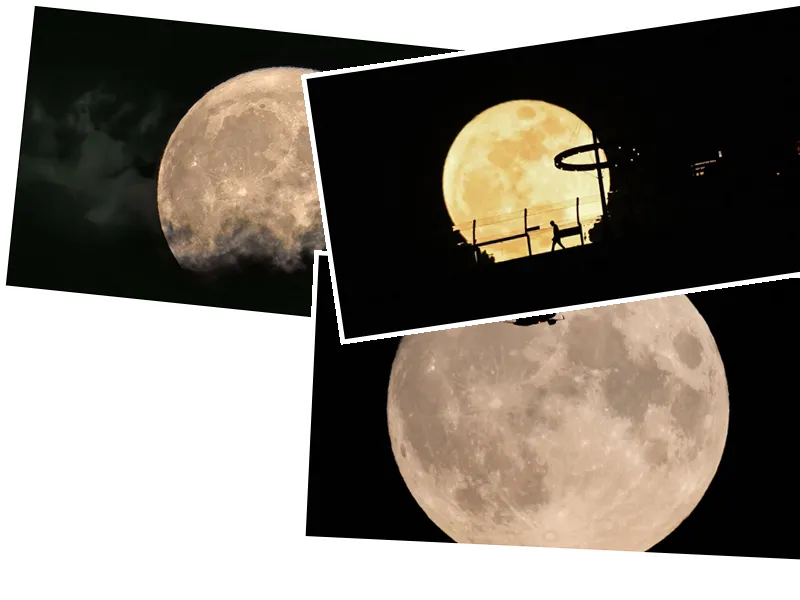The juxtaposition of the celestial event and the tragic airstrikes highlights the contrasting aspects of life in Russia and Syria, where natural beauty coexists with ongoing conflict.
The supermoon serves as a reminder of the natural world's wonders, while the airstrikes underline the humanitarian crises resulting from prolonged warfare.
The visibility of the supermoon may encourage increased public interest in astronomy and outdoor activities, potentially boosting local tourism in areas known for stargazing.
The ongoing violence in Syria may lead to further international scrutiny and calls for a renewed ceasefire, as civilian casualties continue to rise.
Spectacular Supermoon to Illuminate Russian Skies Tonight
On October 17, 2024, Russians will witness a remarkable astronomical event—a supermoon, which is anticipated to be the largest and brightest of the year. This full moon, known as the "Hunter's Moon," follows the autumn equinox and is the third of four supermoons occurring this year. The term "Hunter's Moon" originates from the time when hunters would venture out to track game after the harvest had been completed, benefiting from the bright moonlight.
The supermoon is expected to appear 10% larger and 30% brighter than a typical full moon, with the Moon reaching its closest point to Earth at a distance of approximately 357,300 kilometers. Astronomers suggest that the best time to observe this phenomenon is at sunset, when the Moon rises close to the horizon, creating an optical illusion that enhances its size and gives it an orange hue due to atmospheric conditions. According to experts, this supermoon will be particularly notable as it will be visible even during the day, positioned between the planets Jupiter and Saturn.
Tragic Russian Airstrikes in Syria
In a stark contrast to the celestial event, Russian airstrikes in northwest Syria have resulted in the deaths of 10 civilians and injuries to at least 30 others, as reported by the Syrian Observatory for Human Rights (SOHR). The airstrikes targeted locations in the Idlib countryside, including a furniture workshop, a sawmill, and an olive press, during which many workers were present. Among the deceased was a child, and the strikes have drawn attention to the ongoing violence in the region, despite a ceasefire agreement brokered by Russia and Turkey that is frequently violated.
The Syrian Civil Defense, known as the "White Helmets," reported that they recovered the bodies of those killed in the attacks. The Russian military has not provided comments regarding these strikes, which are part of a broader military campaign that has been ongoing since 2015 to support the regime of President Bashar al-Assad against various rebel factions in the area. The conflict in Syria, which began in 2011, has seen significant backing from Russia and Iran for the Assad regime, while Idlib remains a stronghold for jihadist groups like Hayat Tahrir al-Sham (HTS).





